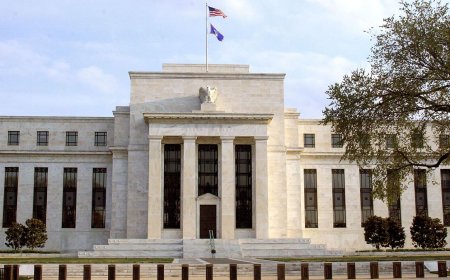Oil retreats as US tariff uncertainty looms, OPEC set to raise output
Crude oil prices fall as US trade policy remains unclear and OPEC prepares to increase output from August. Analysts urge caution amid volatile market conditions.

July 3, 2025 — Crude oil prices slipped on Wednesday, reversing recent gains, as market participants braced for potential disruptions tied to ongoing tariff uncertainty in the US and the likelihood of increased production from the Organization of the Petroleum Exporting Countries (OPEC) and its allies.
The global oil market, which had been riding a wave of optimism on stronger-than-expected demand and geopolitical tensions in the Middle East, is now grappling with the dual pressures of policy ambiguity and supply dynamics.
Tariff Concerns Cloud Demand Outlook
Investors are increasingly wary of the US administration’s indecisiveness over new trade tariffs, particularly on Chinese goods. The Biden administration has hinted at re-evaluating Trump-era tariffs, but growing domestic political pressure ahead of the November elections has stalled a final decision.
"Markets hate uncertainty more than bad news," said Clara Newton, Senior Commodities Analyst at Hawkbridge Capital. "If Washington moves forward with new or extended tariffs, we could see demand destruction, especially from large manufacturing economies like China and India. That’s not bullish for oil."
The US is one of the largest consumers of oil globally, and any economic slowdown resulting from tariffs or retaliatory measures could directly weigh on consumption patterns.
OPEC Set to Raise Output Modestly
Simultaneously, OPEC and its allies—collectively known as OPEC+—are reportedly preparing to gradually increase output from August 2025 onward. According to sources familiar with internal discussions, the group is seeking to balance current price stability with long-term market share preservation.
The upcoming ministerial meeting, scheduled for July 7, is expected to formalize the decision. Industry insiders predict an incremental supply hike of around 500,000 barrels per day (bpd).
"With Brent trading around the $84 mark and inventories starting to tighten, there's room for a measured supply boost," said Fahad Al-Mazrouei, a UAE-based energy consultant. "However, too aggressive a return could derail the fragile recovery in prices seen over the last quarter."
Market Reaction: Prices Fall Across the Board
As of mid-day trading on Wednesday:
-
Brent crude futures dropped 1.8% to $83.92 per barrel
-
West Texas Intermediate (WTI) fell 1.6% to $79.44 per barrel
Trading volumes remained moderate ahead of the US Independence Day holiday, but the downward movement reflected increasing caution.
Energy equities followed suit, with major oil and gas stocks in the S&P 500 Energy Sector Index posting an average decline of 1.2%.
Inventory Data Adds to Pressure
Adding to bearish sentiment, the latest data from the American Petroleum Institute (API) showed an unexpected build of 2.1 million barrels in US crude inventories for the week ending June 28. Analysts had forecast a draw of around 1 million barrels.
"Rising inventories suggest that the recent price rally might have outpaced actual consumption trends," noted Lisa Mendez, Head of Energy Research at Argon Global. "If confirmed by EIA data, it may cap near-term upside for crude benchmarks."
Geopolitical Factors Still a Wild Card
Despite the bearish drivers, traders remain alert to geopolitical risks in the Middle East. Tensions between Israel and Iran, as well as the ongoing conflict in the Red Sea region involving Houthi rebels and international shipping, continue to pose upside risk to oil prices.
"The geopolitical premium hasn’t vanished—it’s just being overshadowed temporarily by economic and policy risks," Mendez added.
Investor Outlook: Proceed with Caution
While short-term sentiment leans bearish, some strategists advise against an overly pessimistic stance. Oil fundamentals, particularly in the second half of 2025, remain relatively constructive if OPEC’s output discipline holds and global demand continues to recover.
JP Morgan, in its latest commodities outlook, maintained its year-end Brent target at $90 per barrel, citing improving jet fuel demand and refining margins.
However, the bank added a note of caution: "Volatility will persist, and price stability hinges heavily on the US policy path, China’s economic performance, and OPEC+ discipline."
The oil market’s recent retreat underscores the fragile balance between supply-side maneuvers and demand-side anxieties. As traders await clarity on US trade policy and OPEC’s production roadmap, volatility is likely to remain elevated. For investors, the key will be maintaining flexibility and keeping a close eye on macro signals that could tip the balance in either direction.
What's Your Reaction?
 Like
0
Like
0
 Dislike
0
Dislike
0
 Love
0
Love
0
 Funny
0
Funny
0
 Angry
0
Angry
0
 Sad
0
Sad
0
 Wow
0
Wow
0













































































